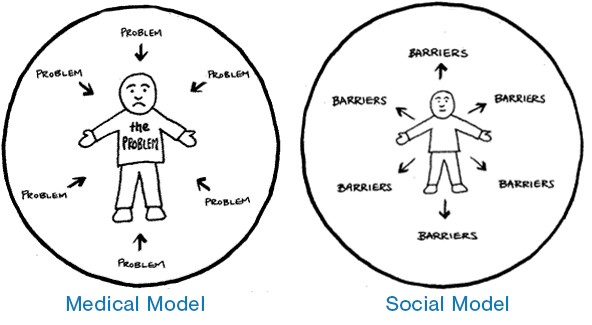Blog #6: Medical vs. Biopsychosocial Model of Disability
There are several key differences between these models. The medical model emphasizes individual impairment as the central issue, often overlooking the role of external factors. On the other hand, the biopsychosocial model acknowledges the interplay of biological, psychological, and social influences. Additionally, while the medical model does not account for environmental factors, the biopsychosocial model places significant importance on how environmental and social barriers affect individuals with disabilities.
 |
https://www.youtube.com/watch?v=mL9I96jPK84
I believe that we can better educate others that a disability does not always need to be "fixed" and that the societal limitations are often greater than the physical or intellectual impairments themselves, we need to shift the way we think about disability.
It's important to teach the social model of disability, which focuses on how barriers in society, like inaccessible buildings or negative attitudes, create more challenges than the disability itself. We can also amplify the voices of people with disabilities by sharing their personal stories, showing they are capable and successful. Changing how we talk about disability is a huge factor as well. Leaving terms like "broken" and using language that respects the person, such as "person with a disability" or "disabled person" as a thing in the past and to move forward positively. "The movement toward combining the concepts into biopsychosocial models started, and it was initially developed by George Engel in the 1970s"(American Academy of Physical Medicine and Rehabilitation).
By focusing on larger systemic issues, like job discrimination and lack of healthcare access, we can raise awareness about how societal barriers are often more harmful than the disability itself. Supporting policies that promote fairness and accessibility is essential, and recognizing that disability is just one part of human diversity helps normalize it as a natural aspect of life. At the end of the day by promoting inclusivity and understanding, we can create a world where everyone has equal opportunities and can live without unnecessary limitations. Living life without a label or term that defines who you are as a person.
Sources:
InSpEd. (2023, December). Easing the tension between medical and social models of disability: The biopsychosocial model of disability. Retrieved from https://www.insped.org.au/wp-content/uploads/2023/12/Easing-the-Tension-between-Medical-and-Social-Models-of-Disability-The-Biopsychosocial-Model-of-Disability-Dec-23.pdf
American Academy of Physical Medicine and Rehabilitation. (n.d.). Conceptual models of disability. AAPM&R. https://now.aapmr.org/conceptual-models-of-disability




Comments
Post a Comment